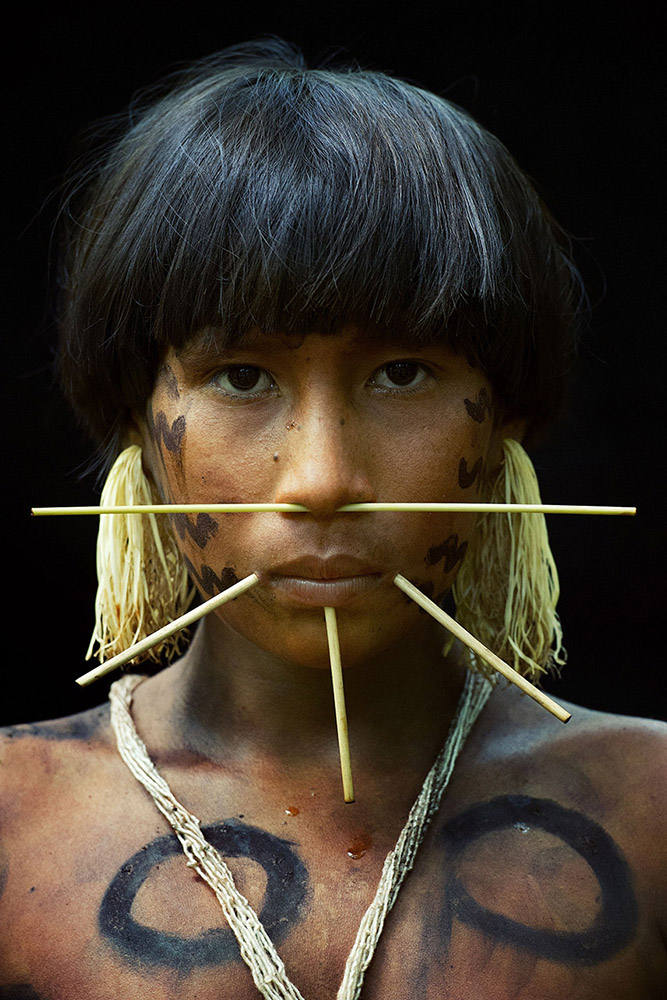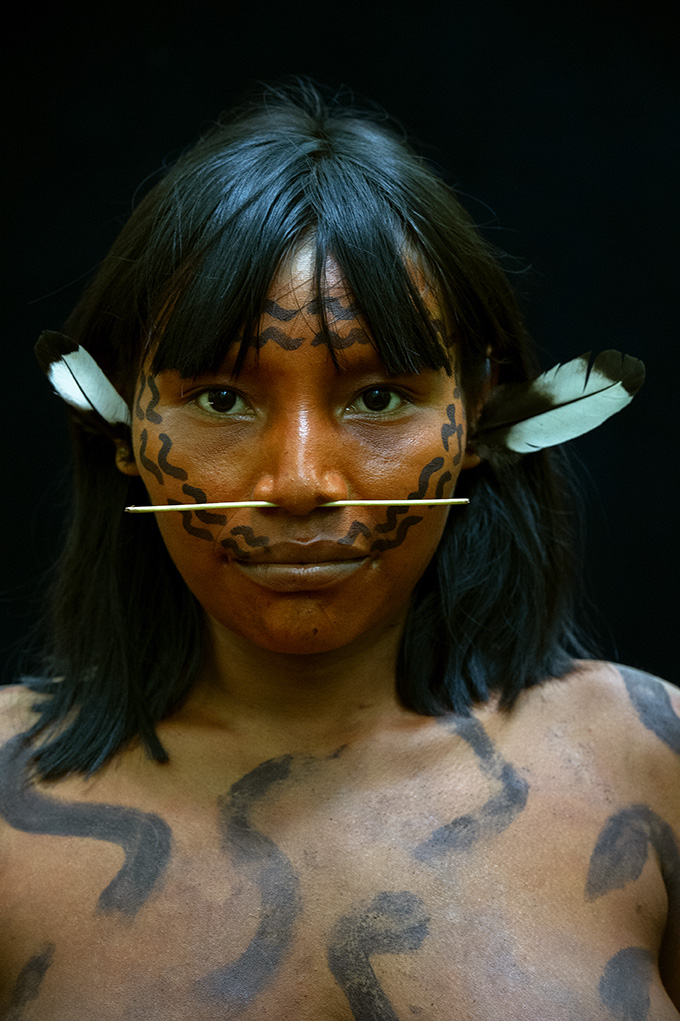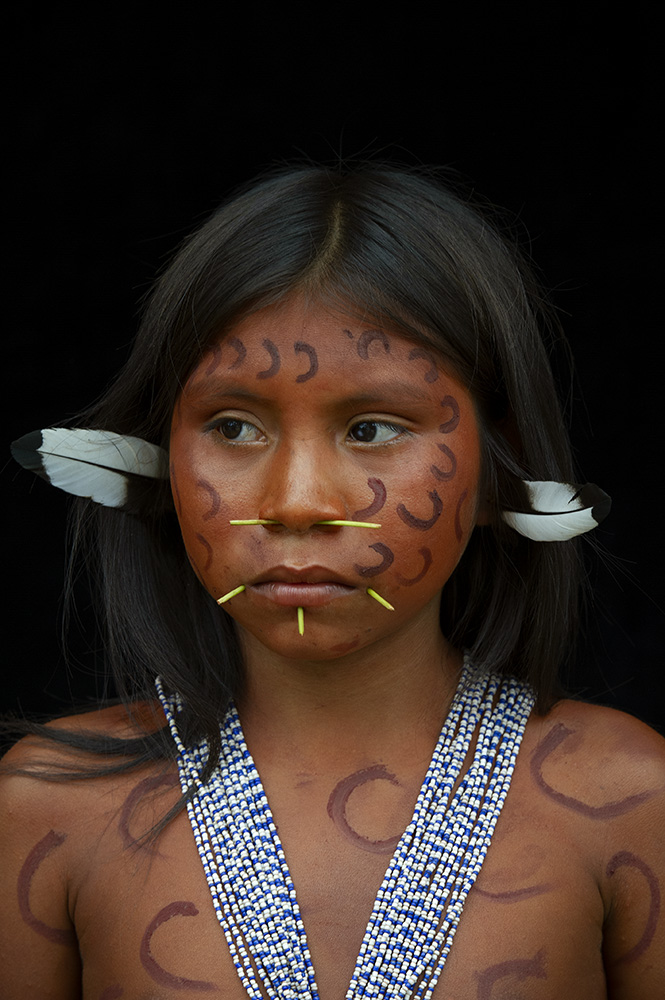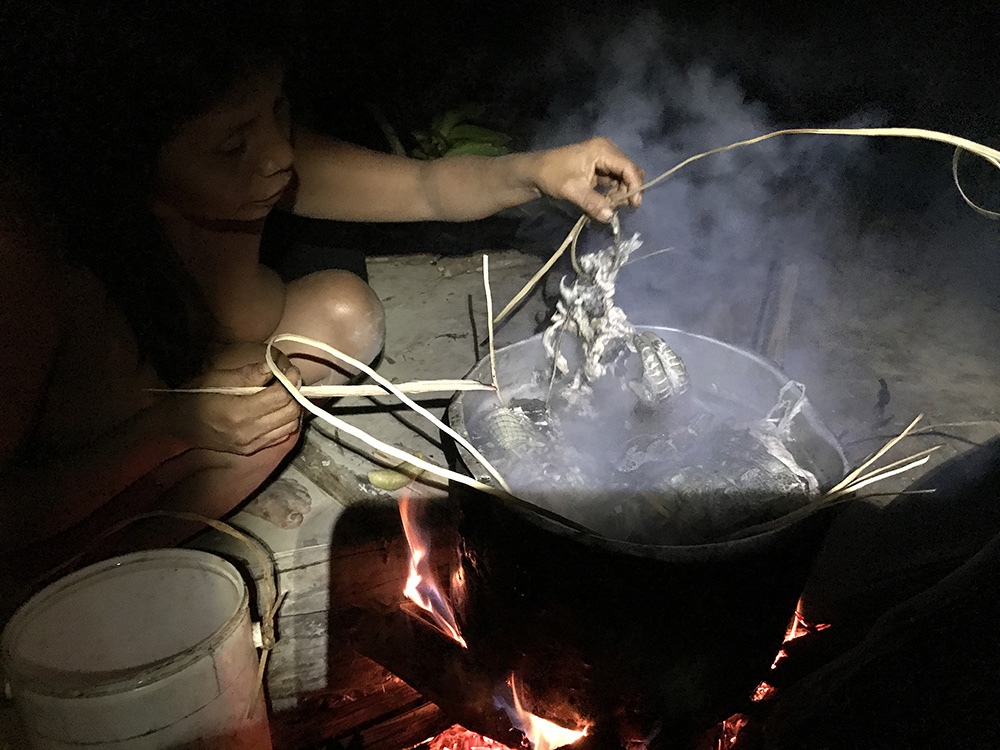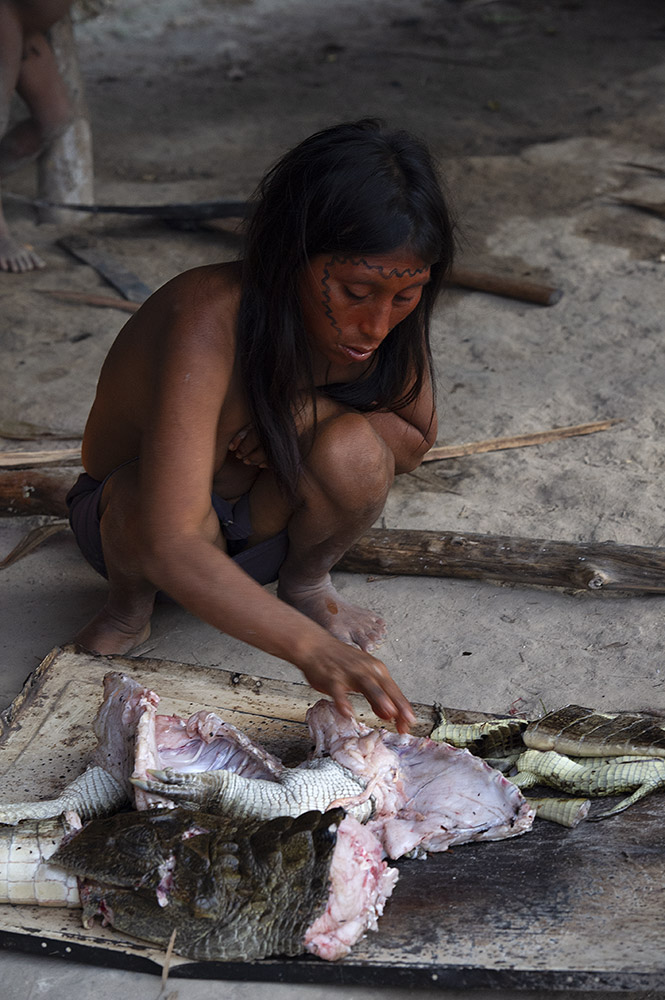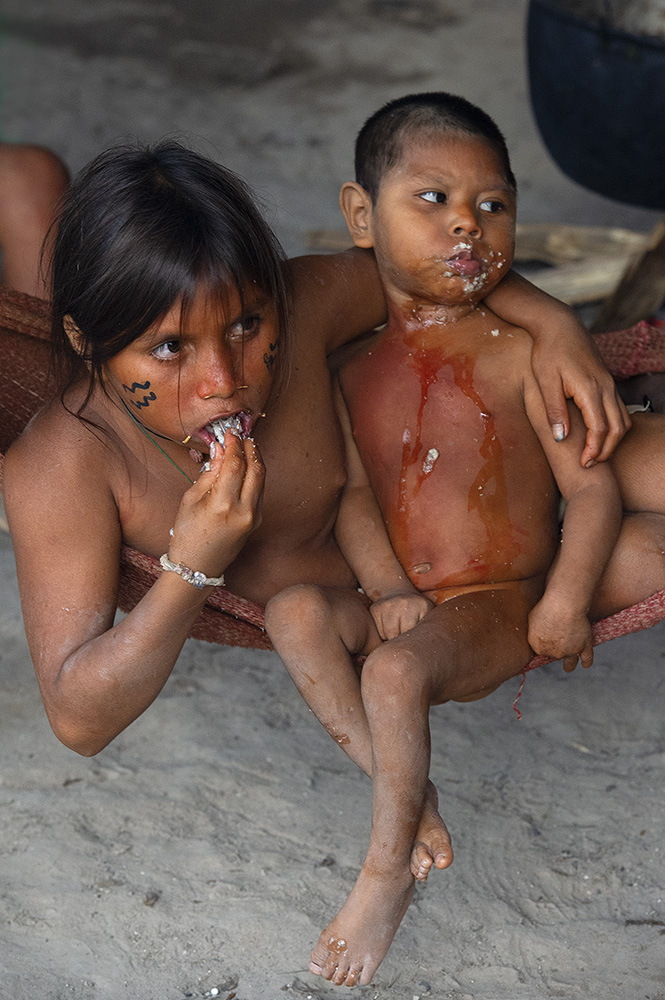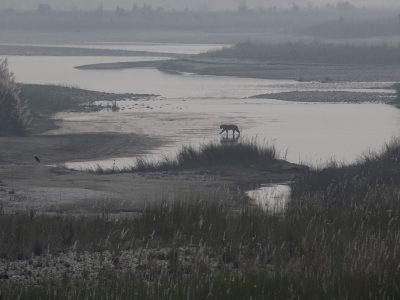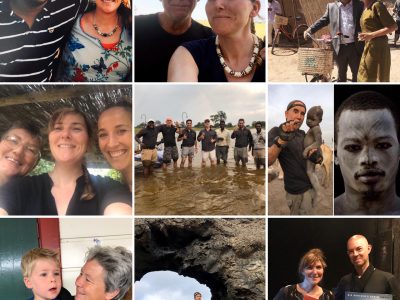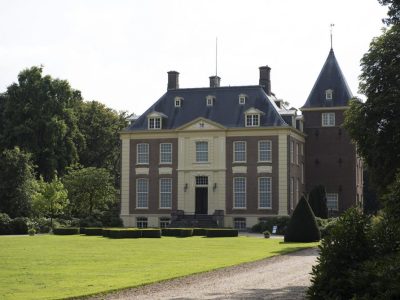Some Yanomami Indians still live in the deep wilderness of the Amazon. These people still follow centuries-old traditions and are very close to nature. Anyone who wants to spend a few days with this tribe must have something to gain, because you’re on the road for a long time….
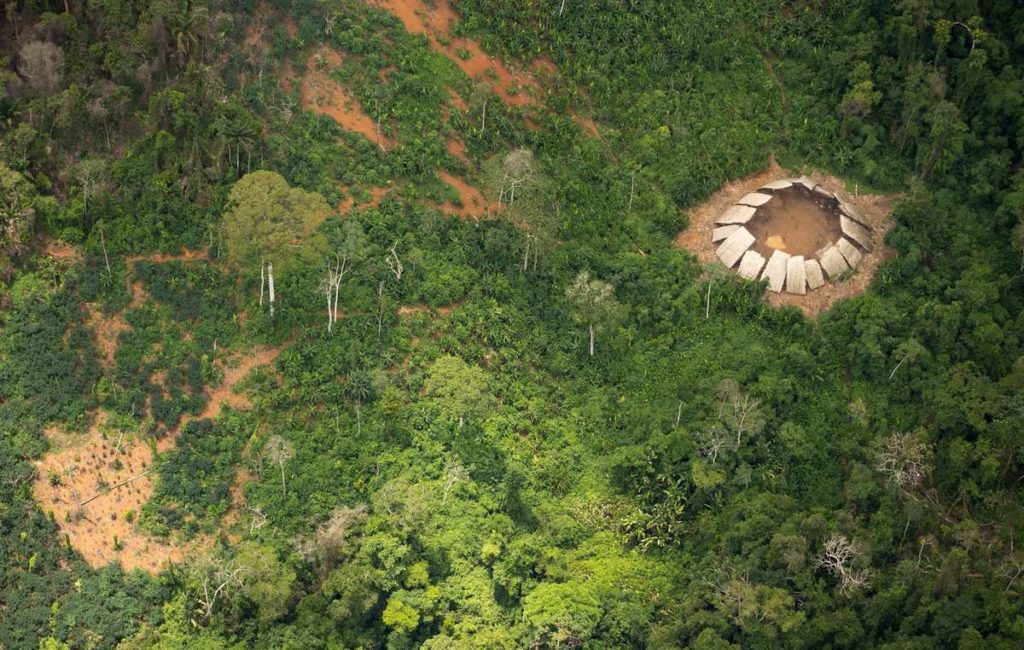
For centuries, they’ve been one with nature. Deep in the Amazon of Brazil and Venezuela, the Yanomami Indians still live authentically as hunters, fishermen and horticulturists. They eat everything the jungle has to offer them, from larvae, sugar cane, sweet potatoes, papayas, mangos to crops like plantains and cassava. There are dozens of shabonos, or communal settlements. Here people live under a common roof. The villages usually consist of large families and vary in size between fifty and four hundred inhabitants. They are close communities. The shabono’s have a characteristic oval shape, with an open terrain in the middle (about 100 meters on average). Marked pillars distinguish the houses built from raw materials from the rainforest. Survival International, which defends tribal peoples’ interests and rights, says the houses are prone to severe weather and insect infestations. As a result, the shabonos are rebuilt every four to six years.
The Tour
Of course you have to get to the Amazon first to reach the Yanomani Indians. Photographer Henk Bothof flew with a small group of travelers from the capital Caracas to Puerto Ayacucho, which lies on the Orinoco river near the border with Colombia. From there he continued his journey by flying a small Chesna plane to St. Carlos de Rio Negro. Arriving in St. Carlos a boat was ready to go on the Rio Casiquiare. Via the branching Siapa river he finally came close to some Yanomami villages. However, they still had to sail for three days to actually reach the first people.
Mosquitoes
Henk tells that the inhabitants of a second village they visited had fled from the enormous amount of mosquitoes. “After a short introduction we sailed on to see the Shabono where they first lived. After a visit we also fled from the mosquito plague. In the Amazon you are bombarded non-stop by these animals. We then went back to a village where we had made contact before and got permission to visit the inhabitants there. It took a lot of gifts like fishing lines, machetes, fabrics, etc. to get there. The Yanomami people don’t need money, but are happy with simple bargains. I was allowed to stay with these people for two days, and I was able to experience beautiful things like making arrowheads. The Yanomami people still hunt traditionally with bows and arrows.
Strong snuff powder
Another characteristic of these indigenous tribes are their ritual customs, such as the application of Yakaona. Henk tells us that the shamans use powder from the bark of a tree and blow it into each other’s nose through a blowpipe. This snuff powder is called yakoana. On the one hand they use it as part of healing rituals for sick members of the community. On the other hand, the shamans may make contact with evil spirits. As with more Indian tribes, with the Yanomami, the spirit realm plays an important role in their culture. Each animal, stone, tree and mountain has its own spirit. There are also evil spirits among them that sometimes cause illness or attack the tribes. According to Survival, shamans control these spirits by using this powder. Henk saw it with his own eyes, ‘I wanted to try this ritual, but the guide advised against it, because it has a hallucinogenic effect that seems to be very intense. Unfortunately I wasn’t allowed to photograph or film this, but I did see it and recorded the sounds. That was very intense. The shamans are completely in a trance and images of birds and ghosts get visions”.
Living spirit of the Yanomami Indians
Another noteworthy ritual is endocannibalism, in which the Yanomami people consume the bones of deceased relatives. Henk hasn’t seen this himself; it’s quite rare for an outsider to be allowed to attend. According to National International the body is wrapped in leaves in the forest, just outside the shabono. The bones are collected after about thirty to forty-five days after the casing has been consumed by insects. To us Westerners it doesn’t seem like a good thing, because the ashes are mixed in a banana soup which the Indians then eat. They keep the ashes in a pumpkin. During the annual commemoration day the ritual is repeated until there is nothing left of the ashes. This tradition is intended to strengthen the Yanomami people and keep the spirit of the individual alive.
Want to know more about the Yanomami Indians and other indigenous peoples and how to support these vulnerable communities? Watch HERE

